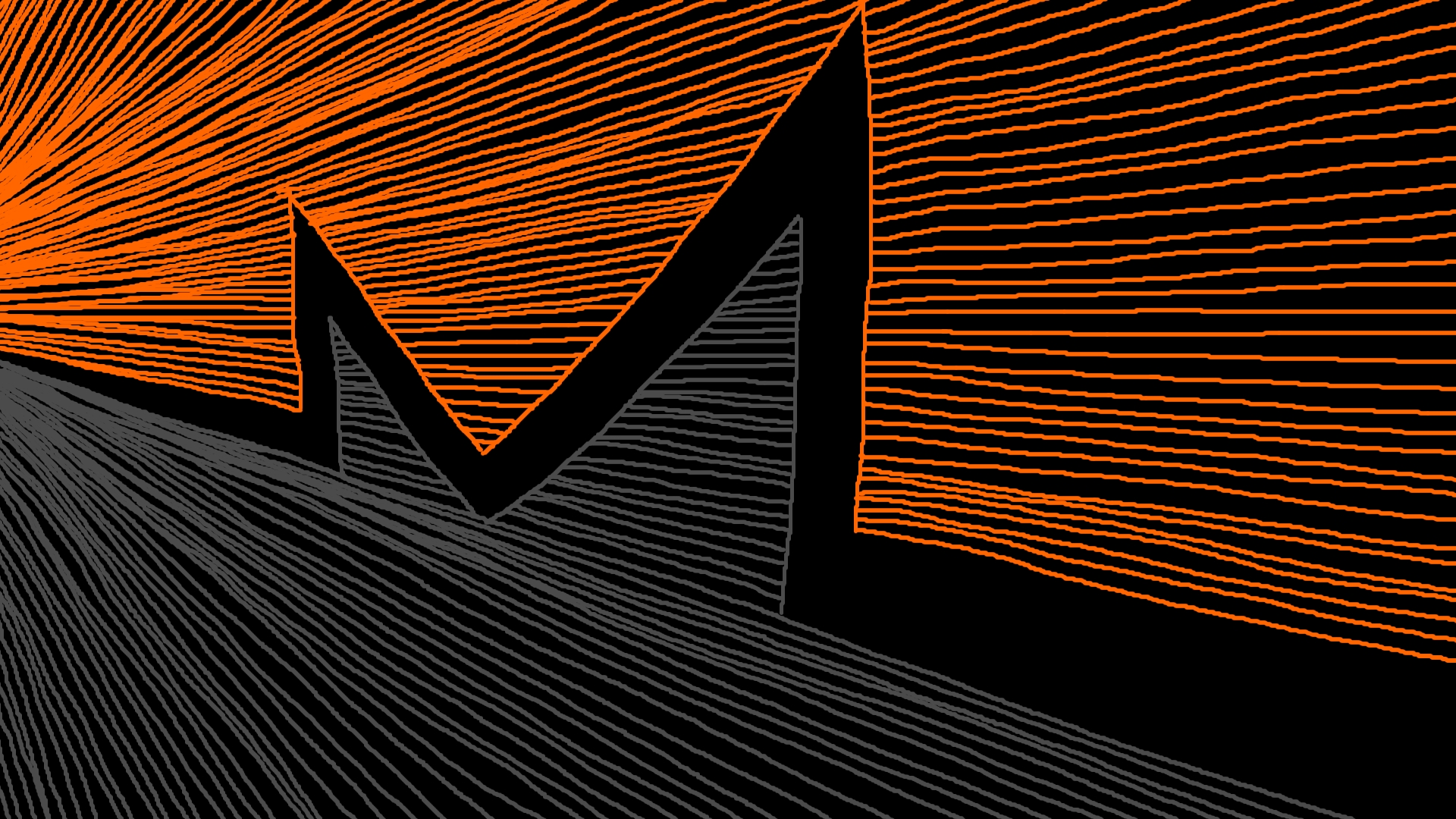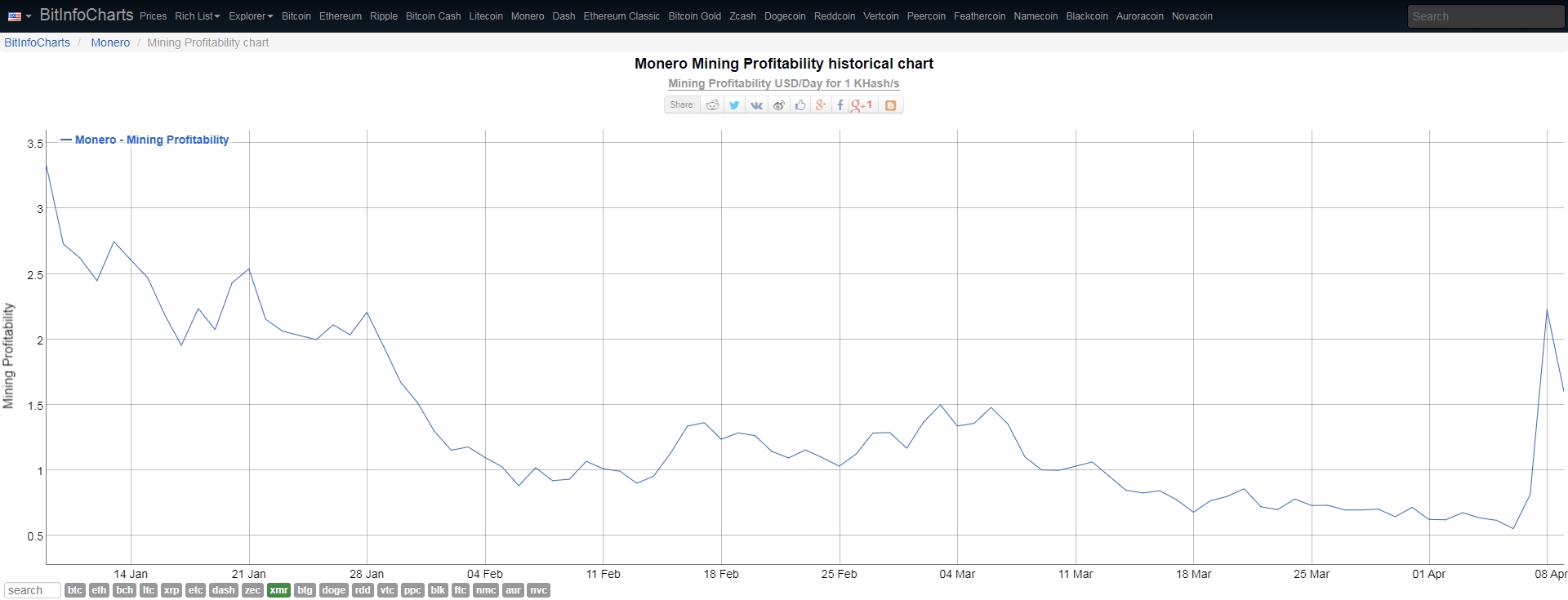Monero's recent hardfork caused major spike in mining profitability!

Monero's hardfork which happened last week on April 6 (block 1546000), was introduced with the intention of making the currency's hashing power more decentralized, by making it more resistant to ASIC miners. Most mining pools warned their users that they would have to update their mining software to be able to continue mining after the fork. Even with the heads up, it seems like a substantial amount of miners were not able to make the transition to new software in time for the fork, resulting in reduced difficulty and higher rewards for those who did.

Many miners were not able to make the transition to new mining software in time for the fork, as illustrated by the sudden drop in hashrate. Could the lower hashrate also be a direct consequence of Monero becoming more ASIC resistant?

With fewer miners competing for rewards, the profitability grew by a factor of four! That's similar to January 28, when one Monero cost about £260. At the time of writing, Monero is at about £130.
Why didn't more miners update their software?
I have previously used Claymore's Monero miner for both CPU mining and GPU mining. It was relatively easy to set up and behaved reliably. When it was time to update my software for the fork, I took a look at the list of new Monero miners recommended by DwarfPool:- XMRig
- Cast XMR
- xmr-stak
- Claymore 11.3
Let's try Claymore 11.3
Since I had already used a previous version of Claymore, I decided to give their updated version a go. It turned out, however, that their version only supported Linux and not Windows. I'm not sure why they chose to omit Windows support in one of their most important updates ever, but I decided to try it anyways. After downloading it, I had to figure out how to unzip the tar.gz file, which wasn't very Windows friendly. After a lot of work I did eventually manage to unzip it, but it turned out that it didn't have a simple clickable Windows batch script to run it. Instead it had a Linux bash script. After struggling to run it for a while I just gave up on it and decided to try a different mining software.Let's try XMRig
I'm not exactly sure why I didn't end up using the XMRig miner. I think it was because it had a very messy folder system with no instructions to run it. I have since explored the XMRig GitHub page further and found some half decent documentation, so I guess I'll have to blame my impatience for not choosing this miner.Let's try Cast XMR
As you've probably realized by now, this post is mainly about the lack of usability found in mining programs (or any independently developed software on GitHub for that matter). Why didn't I end up using Cast XMR? Well, it was actually very easy to download and it had a simple file to click to run it and then it started running. I could hear my computer fans accelerating, so it was clearly working. The problem was just that I had never been prompted to enter a wallet address or mining pool. Nor were there any config files in which I could set them. The program just kept mining and I had no idea for whom it was mining, so without any further investigation, I moved onto the next one.Let's try xmr-stak
Out of all the mining programs recommended by DwarfPool, xmr-strak was the only miner I was able to install and setup without any issues. It was one simple exe-file to run. A window where I could insert a Monero address and mining pool, as well as some other settings popped up, and I was good to go.
The miner even came with a graphic web interface.
Conclusion
Setting up a miner can be a huge challenge if you haven't done it before. The documentation is usually slim and the developer usually assumes that the user is either a developer or a Linux user. Seeing how difficult it was to update to a new miner, it's no wonder why 75% or so were not able to make the transition in time for the new fork. The treshold to set up a new miner is way to high and I believe this keeps a lot of new enthusiasts from getting into the game.It should be said, though, that the developers of these programs offer them for free, so I'm not in a position to complain. I do, however believe that they do not realize how many will give up on their programs before even using them. For developers of mining programs which pay a 1% share to the developers, this could mean missing out on major profits.
Congratulations @oyvindsabo! You have completed some achievement on Steemit and have been rewarded with new badge(s) :
Click on any badge to view your own Board of Honor on SteemitBoard.
For more information about SteemitBoard, click here
If you no longer want to receive notifications, reply to this comment with the word
STOPyou add some software name & your experience... i didn't have much idea about these. i have search about it... thanks for sharing... 👍